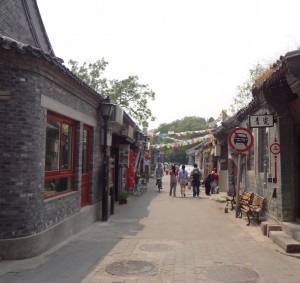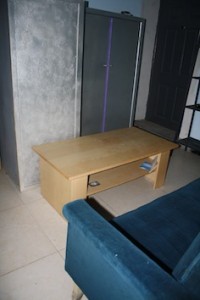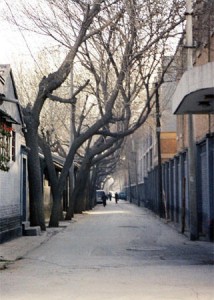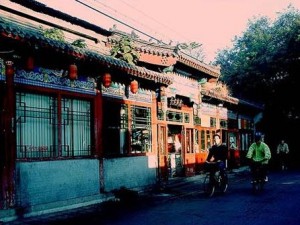Tourist in a Tourist Town
We recently had some friends visit us in Beijing, an occurrence which was a wonderful reminder of how many amazing sights there are in this city. Instead of the major tourists hot spots like the Forbidden City, our friends enjoyed the smaller, more tucked away treasures. The Llama Temple was a favorite, as was eating street food and walking around in the hutongs. We did hit the main highlights (hey, ya got to!), like the Great Wall at Mutianyu and the Forbidden City and Summer Palace, but the real days of exploration and discovery involved the more local favorites, Jingshan Park after the rain, Houhai on a weekend, etc.
Above (image) a very crowded summer-time Forbidden City. The palace was so packed we had to wait in “line” to peek into each throne room. On the other hand, the Great Hall of Clocks provided air conditioning and an early glimpse at China’s attempts to reverse engineer Western technology.
Above (image) Mutianyu. Surprisingly, this favored section of the Great Wall was not that busy mid-week in late May. It was, however, beautiful and worth the drive up. Our guests couldn’t have dreamed of better weather for their Great Wall day.
Above (image) of a side street off Nanluoguxiang. Our guests enjoyed waking up and strolling around the hutongs in search of coffee and adventure. They usually succeeded in one of the two. People watching in the hutongs is a great way to pass some relaxing time. The little window at 12sqm Bar & Cafe was a great place to peek out at the world.
Above (image) of a very un-crowded Llama Temple mid-week. The guests enjoyed this a great deal. It has easy access, isn’t swarmed with camera-touting tourists in floppy hats and smells like sandalwood.
With the current crackdown on foreigners the guests did have to deal with the raging xenophobia common in China. They don’t have other “races” to deal with so they don’t know how not to be racist. Unfortunately, they project all of this on foreigners, which is a broad term that can mean basically anyone who isn’t Han. We had a hard time getting cabs, even though dozens would screech by empty and looking for Chinese passengers. Our poor guests also had several doors rudely shut in their faces. At the Summer Palace the guard told them to go buy tickets to get into a temple, they went, got in line and when they handed the lady their money she slammed the little window down on them, the guard then shut the temple doors. The same thing happened at closing time at Jingshan park and again on their last night at the Bird’s Nest. A shame, but then it is also an accurate picture of a broad swath of people who dislike and distrust anyone non-Han. The crackdown had many other adverse effects, including random passport checks and a crackdown on foreigners riding the subway without their “papers.” This added a lot of stress and was a pain in the ass for tourists and was, essentially, a pointless campaign. Still, I doubt it ruined their experiences.













